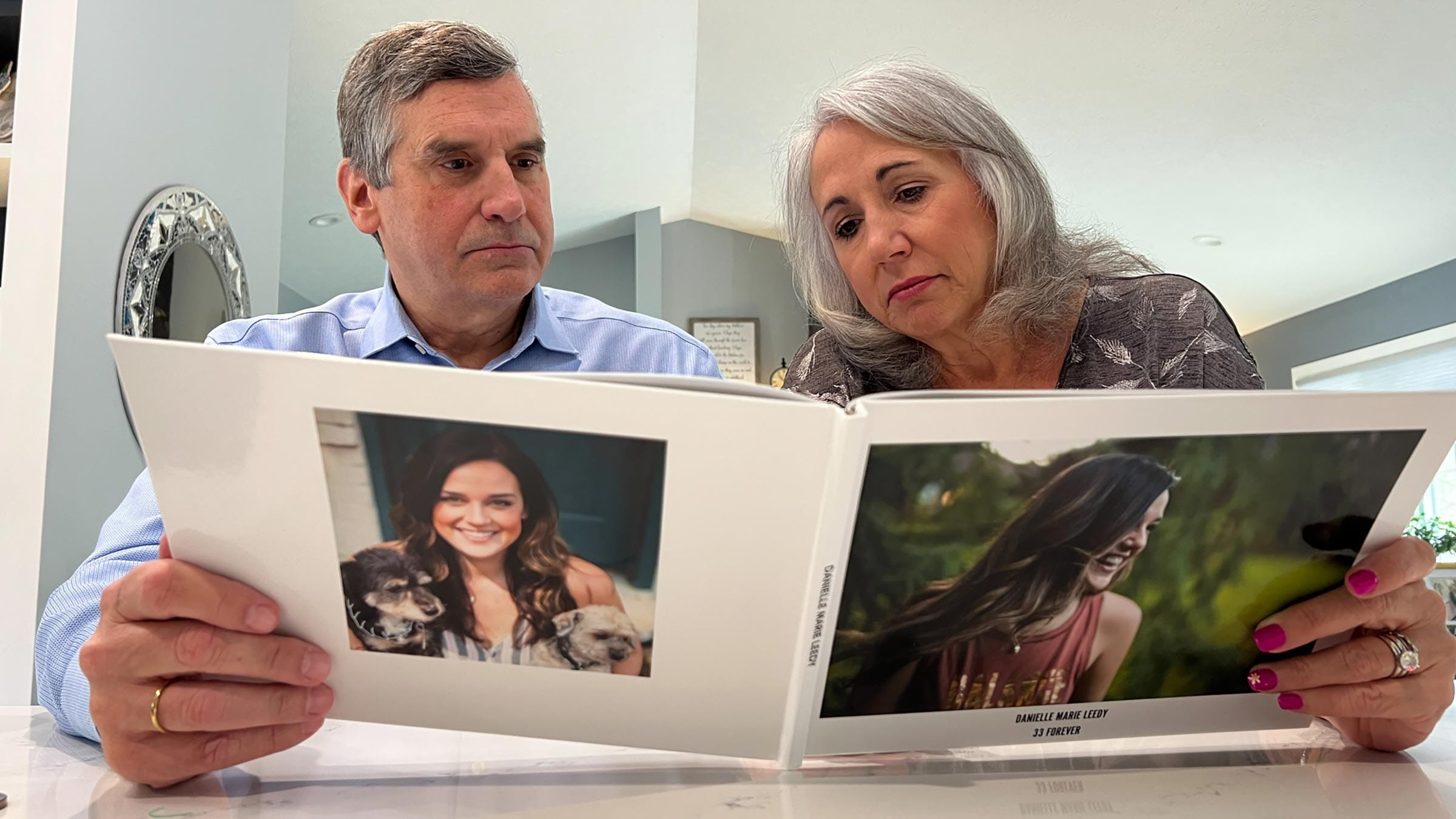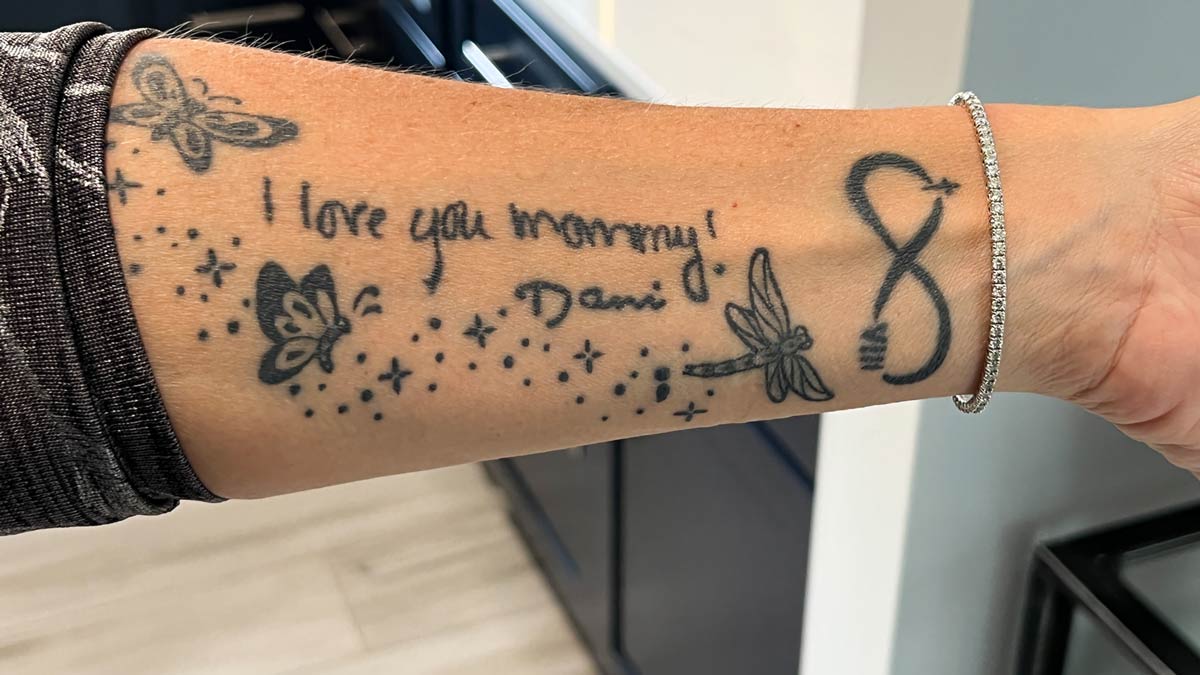
Every time she looks down at the tattoos on her arm, Donna Heck is comforted by her late daughter’s words. The tattoo, in Dani’s handwriting, says: “I love you mommy!”
 Along with Dani’s handwritten signature are tattoos of butterflies, a dragonfly, stars and the infinity symbol. Each one carries a special meaning.
Along with Dani’s handwritten signature are tattoos of butterflies, a dragonfly, stars and the infinity symbol. Each one carries a special meaning.
Donna and Jeff Heck of Lexington, Ohio, lost their 33-year-old daughter Dani to suicide in 2019, just as she was making plans to start a non-profit organization to help others suffering with mental illness and suicidal thoughts.
“She had a dark moment that she couldn’t get through, unfortunately, and that’s why we lost her, but she believed that you could,” said Jeff Heck. “It's about trying to provide people with resources to help and hope. And understanding that, you know, you can see tomorrow, you’ve just got to get through the moment. And if you can get through the moment, you can be here tomorrow, and you can live a good life and you can overcome.”
Now her parents are carrying out her dreams through the 33 Forever, Inc., a nonprofit created in Dani’s honor. They host a weekly podcast as part of their efforts to reduce the stigma around mental health problems and to encourage more people to talk about their struggles, including thoughts of suicide.

They also support suicide prevention research by Craig Bryan, PsyD, whose work is exploring the connections between gun ownership and suicide. Dr. Bryan is a clinical psychologist and director of the Division of Recovery and Resilience at Ohio State’s Department of Psychiatry and Behavioral Health.
He led a new study with researchers at The Ohio State University Wexner Medical Center and College of Medicine that aims to ensure medical professionals are asking the right questions to prevent a tragedy. The study, published May 11 in the journal JAMA Network Open, found that gun owners with a recent suicide attempt are less likely than non-gun owners to report experiencing suicidal ideation, even though firearms are the most common method of suicide.
Dr. Bryan and his team concluded that gun owners and non-gun owners experience thoughts about suicide in different ways, which may explain why the standard questions to identify those at risk of suicide often fall short.

“Not everyone experiences suicidal ideation in the same way. So, maybe our traditional ways of asking about suicidal thoughts are incomplete,” Dr. Bryan said. “Just a simple shift in questioning, adding one more different perspective or a different angle to ask about suicidal thoughts could potentially help us to identify people who are in a vulnerable state.”
For example, instead of asking someone if they’ve thought about suicide, ask them if they’ve considered a method of suicide. That’s a question that gun owners are more likely to have an answer to, Dr. Bryan said. In addition, combining more comprehensive assessment questions with simple barriers to immediate gun access, such as locking firearms in a safe or asking someone they trust to store them, can save lives, he said.
“Suicidal crises tend to come on suddenly, but don't last very long. Limiting access to lethal methods during that short window of time could potentially prevent a suicide.” Dr. Bryan, author of the book Rethinking Suicide: Why Prevention Fails, and How We Can Do Better
Donna Heck said that, after losing someone to suicide, people often wonder what they could have done.
“Losing a child is awful,” she said. “Losing a loved one is awful, but there's another layer when you lose someone to suicide because, ‘What did you miss? What could you have done to help change the situation?’”
That’s why Dr. Bryan says questions should be expanded and be tailored to individuals.
“Part of the reason that we've not been better at preventing suicide is we always try to find, ‘What's the one path that everybody follows?’ But there is no single path. There are multiple paths, and we need to customize different strategies, interventions and prevention approaches for those different pathways.”
For anyone at risk of suicide, help is available 24/7 by calling 800-273-TALK or texting 741741.







